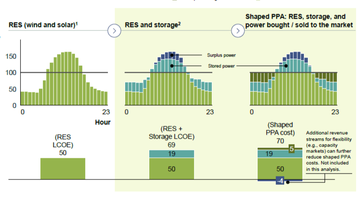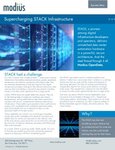Hyperscale data center operators who want to reach net zero carbon emissions often use power purchase agreements (PPAs) as a way to do so. But in reality, these PPAs generally don't cancel out emissions as fully as you might think from the way they are described.
A typical example is Amazon, which recently set up a 50MW PPA in Scotland, taking the output of a 50MW wind farm (taking its UK PPA total to 529MW), and said this took it closer to its promise to run entirely on renewable energy by 2025.
That's true, as far as it goes, but wind-based PPAs only produce a carbon reduction of 60 to 70 percent (and solar PPAs are worse).
1MW of wind power doesn't match 1MW of load
Why doesn't 50MW of wind power cover 50MW of data center usage? Because it doesn't match.
Today, most PPAs are bought on a "pay-as-produced" basis, which means the operator pays for all the energy the wind farm produces, and then uses the same amount of energy as it needs it. However, the wind farm only produces energy when the wind is blowing (obviously enough). Meanwhile, the data center it ostensibly powers carries on operating 24 hours a day, seven days a week.
On still days, the data center will be running on whatever other power the grid has available. In the UK, this often comes from natural gas.
It also means that a large amount of the power the data center operator paid for will be given to the grid, at a time when there is a surplus of renewable energy, and so it has a low value.
So, if Amazon buys a 50MW PPA, it can claim to have shifted 50MW of its consumption to 100 percent renewable energy. But the real carbon intensity of the energy it actually uses, is around 70 percent of the normal grid's carbon intensity, according to a report written by McKinsey for the Long Duration Energy Storage Council (LDES Council).
During the night, solar power doesn't work at all, so solar has even less of an impact - reducing the carbon intensity of the energy used by only around 50 percent.
The only way to buy renewable energy, and cover your actual energy usage, is to pay for the costs of storing energy until you need it. So companies operating hyperscale data centers should be paying for large batteries (or pumped hydro or other energy systems ) to store the energy when it is generated, and feed it out when they need it.
A PPA which covered energy storage would be a 24x7 PPA - and these are the ones that hyperscalers and other large users should be buying, if they are making claims to he on a path to net neutrality, according to the LDES Council. .
“24x7 clean PPAs provide a form of time-matched clean power, a highly desirable commodity for corporates looking to reduce their Scope 2 greenhouse gas emissions,” the report says.
Right now, operators led by Amazon, Microsoft and Google, are the leaders in PPA purchases, buying more than 31GW of PPAs in 2021. Amazon now has 13.9GW of PPA power, with Microsoft on 8.9GW and Google on 8GW.
But they aren't buying 24x7 PPAs. Both Microsoft and Google have promised to move towards matching power 24x7, but as far as we understand it, their work is still at an experimental stage. Those two have also both joined the LDES Council. Alongside this Microsoft has renewable energy deals which include storage.
Amazon's position is vaguer It hasn't publicly promised to move to hour-by-hour matching of its energy usage. It has invested in energy storage - it appears to have paid for around 1700 MWh of energy storage (or 445MW for four hours), which is obviously small compared with the 13.9GW of renewable power it's bought.
Storage is the answer
If hyperscalers bought "24x7 clean PPAs", these would be much more expensive than "pay-as-produced" PPAs, because they'd have to roll in battery storage which does not come cheap at the size that woudl be needed.
But if they don't buy 24x7 clean PPAS, LDES Council says their local grid operators will have to keep on building new fossil power stations - because these are the only real way to create "despatchable" power, which can be switched on as needed, when renewable sources fade out. The Council say large scale long duration energy storage "could eliminate the need for marginal fossil fuel plants to fill gaps in power supply created by the inherent variability of wind and solar power."
Anyone reading this should of course spot the vested interest: It's not too surprising that the Long Duration Energy Storage sponsored a report that points to a need for long duration energy storage.
But the need is genuine, and LDES Council is bang on target in pointing out the mismatch between the claims for today's PPAs, and their actual effects.
If Amazon, or Microsoft, or Facebook, or Google buys 50MW of intermittent power and uses 50MW of constant power, that action makes things worse for the grid, not better. It's a kind of greenwash, in which a huge benefit is claimed for an action which does not fully deliver that benefit. A 50MW data backed by a 50MW renewable PPA actually does cause significant emissions.
I think we are entitled to say that cloud providers are receiving huge revenues, boosted by the Covid-related increase in digitization. They are also arguably dodging poaying the taxes that should pay for infrastructure. It's not too much to ask them to actually invest enough of their profits to cover their environmental costs.
If this means tech giants have to eat into their huge cash reserves to buy proper PPAs, then good. Because that is going to cut emissions for a whole different reason. As we recently saw, those cash reserves are currently being invested in the fossil industry, and are fuelling the environmental catastrophe while the tech giants smugly make their net zero claims.






